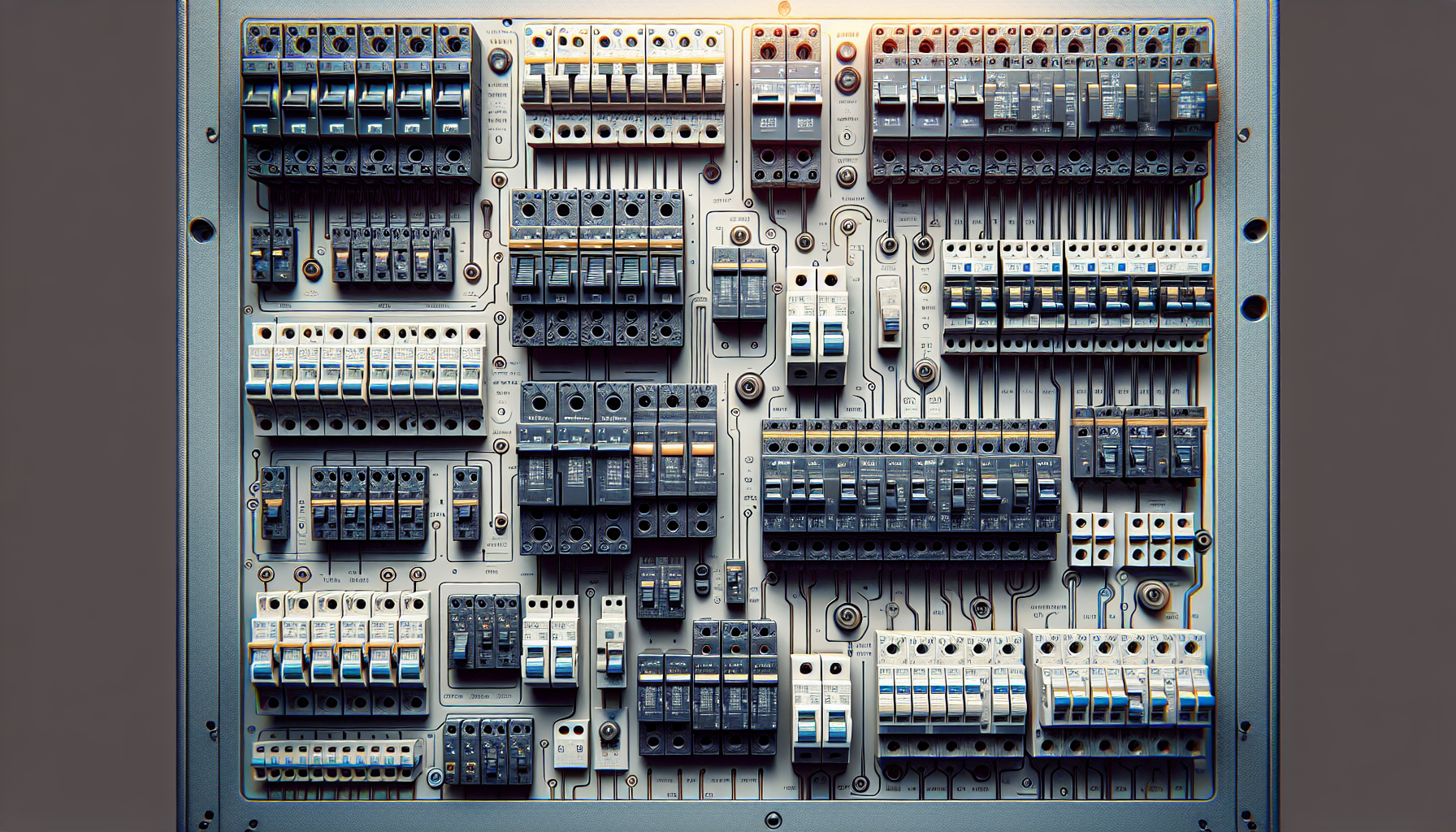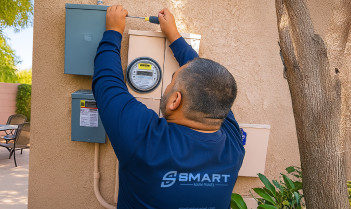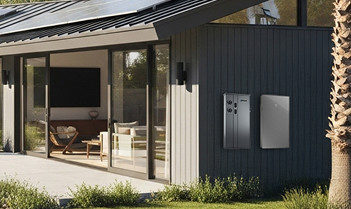
Date
How Do I Know If I Have A 100 Or 200 Amp Panel?
So, you’re curious about how to determine whether you have a 100 or 200 amp panel, huh? Well, you’ve come to the right place! It’s important to know the capacity of your electrical panel, as it determines the maximum amount of power your home can safely handle. In this article, we’ll explore some simple methods that will help you figure out the amperage of your panel without any hassle. Whether you’re planning a renovation or just want to ensure your electrical system is up to par, understanding the amp rating of your panel is a crucial piece of knowledge. Let’s get started!
Understanding Electrical Panels
What is an electrical panel?
An electrical panel, also known as a breaker box or distribution board, is a crucial component of a building’s electrical system. It serves as the main distribution point for electricity, where the incoming electrical power is divided and directed to various circuits throughout the house or building. The panel contains circuit breakers or fuses that protect each circuit from overload, ensuring safety and preventing electrical fires.
What is ampacity?
Ampacity refers to the maximum amount of electric current that a circuit or wire can safely carry without overheating or causing damage. It is measured in amperes (amps) and is an important consideration when assessing the capacity and capability of an electrical panel. Ampacity determines how many electrical appliances, devices, and circuits can be safely connected and operated within a building.
What is the difference between a 100 amp panel and a 200 amp panel?
The main difference between a 100 amp panel and a 200 amp panel lies in their ampacity ratings. A 100 amp panel can handle a maximum load of 100 amps, while a 200 amp panel can handle double that capacity, with a maximum load of 200 amps. The higher amp rating of a 200 amp panel allows for more circuits and greater electrical capacity, making it suitable for larger homes or buildings with higher electrical demands.
Identifying Your Electrical Panel
Locating the main breaker
To identify your electrical panel, start by locating the main breaker. The main breaker is typically a larger switch or circuit breaker at the top or bottom of the panel. It serves as the primary disconnect switch for the entire electrical system. Switching off the main breaker shuts off power to all circuits in the panel, making it a crucial component for electrical safety and maintenance.
Checking the panel rating plate
The panel rating plate provides essential information about the electrical panel, including its ampacity rating. It is usually located on or near the panel and contains details such as the manufacturer, model number, and maximum amp capacity. The rating plate is an accurate and reliable source to determine the ampacity of your electrical panel and ensure that it meets your electrical needs.
Visual Inspection
Size and number of circuit breakers
Performing a visual inspection of your electrical panel involves examining the size and number of circuit breakers present. Circuit breakers are protective devices that automatically shut off the power to a circuit when it detects an overload or fault. Count the number of circuit breakers in your panel and take note of their sizes. A larger panel with more circuit breakers indicates a higher ampacity, while a smaller panel with fewer breakers suggests a lower ampacity.
Appearance of the main breaker
Inspect the appearance of the main breaker for any signs of damage or wear. The main breaker is responsible for disconnecting the power supply to the entire electrical panel, so its condition is critical. Look for any physical defects such as corrosion, burning marks, or loose connections. If you notice any irregularities, it is recommended to consult a licensed electrician for further evaluation and possible repairs.
Inspecting the wires and cables
During a visual inspection, carefully examine the wires and cables within the electrical panel. Look for any signs of fraying, damage, or loose connections. Wires that are in poor condition can pose significant safety hazards, such as electrical shocks or fires. Additionally, ensure that the wires are properly labeled to identify the corresponding circuits. If you encounter any concerns or uncertainties, it is best to seek professional assistance to address the issues promptly.
Measuring Ampacity
Using an ampacity meter
Ampacity can be measured using a specialized tool called an ampacity meter. This device allows for the precise measurement of electrical current flowing through a circuit or wire. To measure the ampacity of an electrical panel, the meter is typically connected to the main breaker or an individual circuit breaker. The meter then displays the current flowing through the circuit, providing an accurate reading of the ampacity. It is essential to follow proper safety protocols and consult a professional electrician when using an ampacity meter.
Consulting a professional electrician
While an ampacity meter can provide an accurate measurement, it is advisable to consult a professional electrician for an expert assessment of your electrical panel. Electricians possess the knowledge and experience to accurately determine the ampacity and ensure the safety and compliance of your electrical system. They can also provide valuable insights and recommendations regarding any necessary upgrades or modifications needed to meet your electrical needs.
Determining Panel Capacity
Calculating the total electrical load
Determining the panel capacity involves calculating the total electrical load of your home or building. This calculation takes into account the electrical requirements of all appliances, devices, and circuits connected to the panel. Consult the user manuals, wattage ratings, or consult an electrician to accurately assess the electrical load of each component. By adding up the individual loads, you can estimate the total electrical load and determine if it exceeds the capacity of your electrical panel.
Comparing the total load to panel capacity
Once you have calculated the total electrical load, compare it to the ampacity rating of your electrical panel to determine if it can handle the load. If the total load is close to or exceeds the panel’s capacity, it may be necessary to upgrade to a higher ampacity panel. Overloading an electrical panel can lead to tripped breakers, overheating, and potential fire hazards. Ensuring that the panel capacity matches or exceeds the electrical load provides a safe and reliable electrical system.
Signs of Overloaded Panel
Frequent circuit breaker trips
One common sign of an overloaded panel is when circuit breakers frequently trip or shut off. This occurs when the electrical load exceeds the capacity of the circuit it is connected to. If you find yourself resetting breakers on a regular basis, it is a strong indication that your electrical panel may be overloaded and in need of an upgrade.
Dimming or flickering lights
When the lights in your home consistently dim or flicker, it may be a result of an overloaded electrical panel. Dimming or flickering lights can indicate that the electrical draw from multiple appliances or devices is straining the panel’s capacity. If this issue persists, it is crucial to address it promptly to prevent further damage and ensure electrical safety.
Burning smell or discolored outlets
If you notice a burning smell or discolored outlets in your home, it could be a telltale sign of an overloaded panel. Overloaded circuits can cause wires to overheat, leading to the distinctive smell of burning and potentially causing damage to the outlets. Discoloration of outlets is another indicator of excessive heat and stress within the electrical system. It is vital to take immediate action, as these signs can signify a severe electrical hazard.
Upgrading an Electrical Panel
When to consider upgrading
There are several instances when upgrading an electrical panel is necessary. If you are planning a home renovation or addition that requires additional electrical circuits, it is an opportune time to upgrade the panel to meet increased demands. Similarly, if you frequently experience tripped breakers or other signs of an overloaded panel, it is recommended to consider an upgrade. Overall, upgrading your electrical panel ensures the safety and capacity of your electrical system.
Hiring a licensed electrician
Upgrading an electrical panel is a complex and potentially hazardous task that should only be performed by a licensed electrician. Electricians have the knowledge and expertise to assess your electrical needs, determine the appropriate panel size and ampacity rating, and perform the installation safely and in compliance with local building codes. Hiring a licensed professional ensures that the upgrade is done correctly, minimizing the risk of electrical hazards and ensuring the reliability of your electrical system.
Cost of panel upgrade
The cost of upgrading an electrical panel can vary depending on various factors, including the size of the panel, the ampacity rating, the complexity of the installation, and labor expenses. On average, the cost of a panel upgrade can range from a few hundred to a few thousand dollars. While the upfront cost may seem significant, it is an investment in the safety, efficiency, and reliability of your electrical system, providing long-term benefits and peace of mind.
Importance of Panel Capacity
Avoiding electrical hazards
Having an electrical panel with sufficient capacity is essential for avoiding electrical hazards. Overloaded panels can overheat, leading to damaged wiring, melted insulation, and even electrical fires. By ensuring that your electrical panel can handle the total load of your home or building, you significantly reduce the risk of electrical hazards, safeguarding both your property and the well-being of its occupants.
Ensuring electrical reliability
Adequate panel capacity ensures the electrical reliability of your home or building. Insufficient panel capacity can cause voltage drops, leading to dimming lights, appliance malfunctions, and overall poor electrical performance. Upgrading to a panel with a higher ampacity rating ensures that all circuits receive a consistent and reliable power supply, preventing disruptions and enhancing the overall functionality of your electrical system.
Accommodating future electrical needs
Considering future electrical needs is crucial when determining the panel capacity. Upgrading to a higher ampacity panel not only addresses current demands but also provides room for future expansions or increased electrical requirements. By planning ahead and accommodating potential growth, you avoid the need for frequent panel upgrades, saving both time and money in the long run.
Regulations and Codes
National Electrical Code (NEC)
The National Electrical Code (NEC) is a set of safety standards and regulations for electrical installations in the United States. It provides guidelines for the design, installation, and maintenance of electrical systems, including electrical panels. Compliance with the NEC ensures that electrical work is done safely, protecting both properties and individuals. It is crucial to consult the NEC and adhere to its guidelines when upgrading or installing an electrical panel.
Local building codes
In addition to the NEC, local building codes prescribe specific requirements for electrical installations. Building codes vary from one municipality to another, and it is essential to consult the local building department to familiarize yourself with the specific codes and regulations applicable to your area. Adhering to local building codes ensures that your electrical panel upgrade is done correctly and legally, avoiding potential penalties or complications.
Permit requirements
In many jurisdictions, obtaining a permit is a mandatory requirement for electrical panel upgrades. Permits ensure that the electrical work is performed by qualified individuals and in compliance with applicable codes and regulations. It is advisable to check with the local building department to determine if a permit is required for your panel upgrade project. Engaging in unpermitted electrical work can result in serious consequences and may affect insurance coverage and property resale value.
Conclusion
Identifying the ampacity of your electrical panel is critical to ensure the safety and functionality of your electrical system. By understanding the difference between a 100 amp panel and a 200 amp panel, you can assess your electrical needs and make informed decisions. Locating the main breaker and checking the panel rating plate are the first steps in identifying your electrical panel. Visual inspection, measuring ampacity, and determining panel capacity are essential for evaluating the condition and capability of the panel. Signs of an overloaded panel should not be ignored, and a panel upgrade may be necessary to accommodate increased electrical demands and ensure safety. It is important to comply with regulations and codes, such as the National Electrical Code and local building codes, as well as obtaining any required permits for your panel upgrade. Consulting a professional electrician is recommended for accurate and safe assessment of your electrical panel. Ensuring that your electrical panel meets your needs is vital for avoiding hazards, ensuring reliability, and accommodating future electrical requirements.



